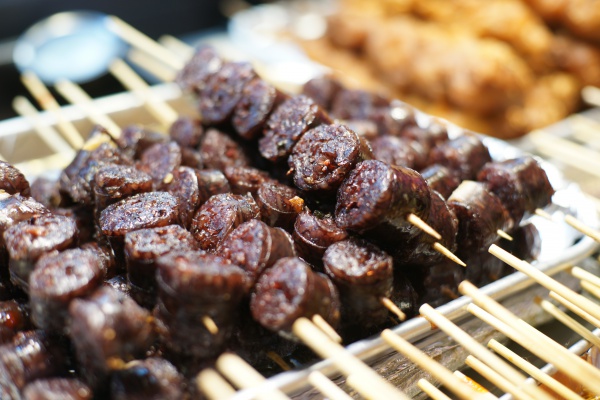Facts About Sundae
Sundae is a cherished type of blood sausage in Korean cuisine, enjoyed as popular street food in both North and South Korea. This delicacy is typically made by steaming cow or pig intestines stuffed with a variety of ingredients.
A Slice of History:
Sundae has origins that date back to the Goryeo period. Traditionally, it was a special treat served during significant occasions and large gatherings. However, after the Korean War, meat shortages led to a creative adaptation in South Korea: the use of dangmyeon (glass noodles) as a filling.
Varied Varieties:
There are several types of sundae, each with its unique characteristics. The traditional South Korean version includes blood, minced meat, rice, and vegetables. Regional variations add more flavors to the mix:
- Abai-sundae: A hearty variant from the northern regions.
- Kaesong-sundae: A specialty from Kaesong.
- Jeju-sundae: A distinct take from Jeju Island.
Some versions even use seafood as the casing, like ojingeo-sundae, which is made with fresh squid.
Serving Suggestions:
Sundae is often accompanied by steamed offal and is typically dipped in various sauces that vary by region. Popular dipping options in South Korea include:
- A salt and black pepper mixture.
- A vinegar and gochujang (spicy red chili paste) blend.
- Seasoned soybean paste.
- Soy sauce.
Sundae Dishes:
Sundae is not just a snack; it also features prominently in several Korean dishes:
- Sundae-guk: A comforting soup featuring sundae.
- Sundae-bokkeum: A flavorful stir-fry with sundae and vegetables.
- Baek-sundae-bokkeum: A milder stir-fry version without gochujang.
Where to Find It:
Sundae is readily available in snack bars and traditional markets throughout Korea, making it a convenient and tasty treat for both locals and tourists.
Whether you prefer traditional flavors or are eager to try something new, sundae offers a rich and diverse taste of Korean culinary culture.

 North Korea
North Korea